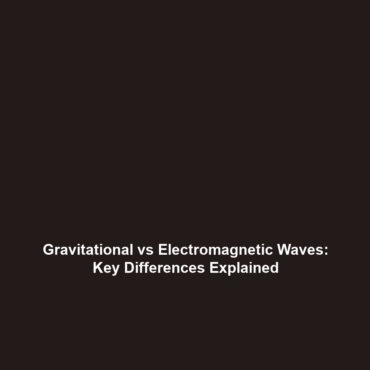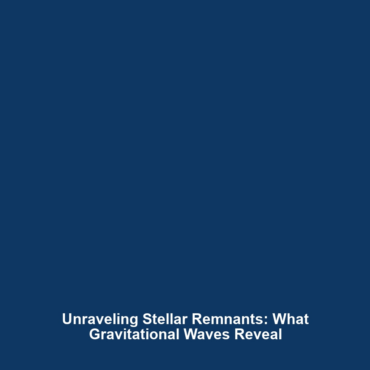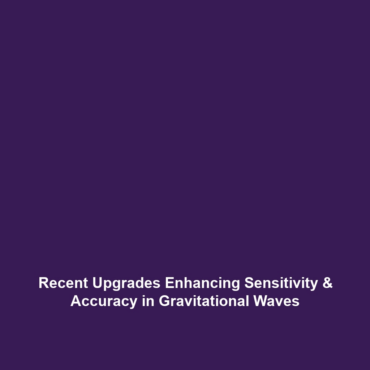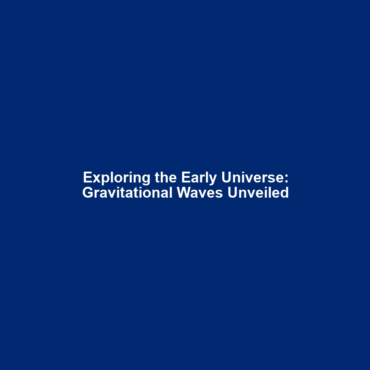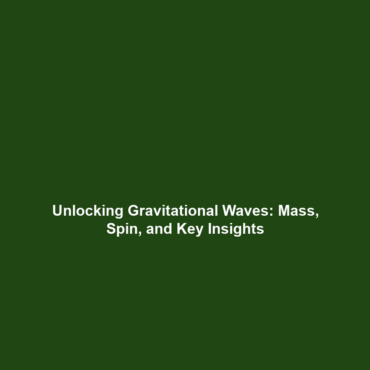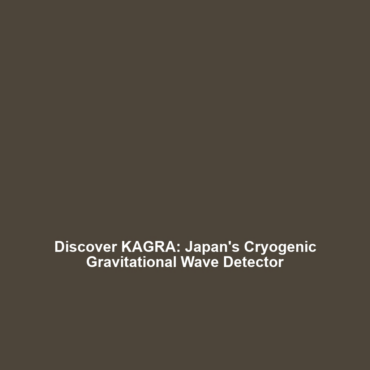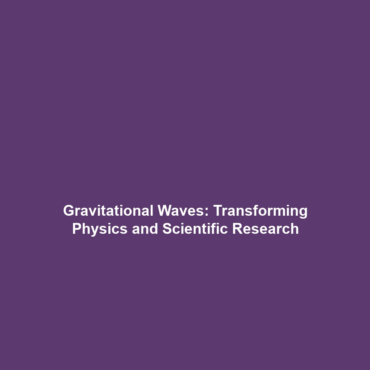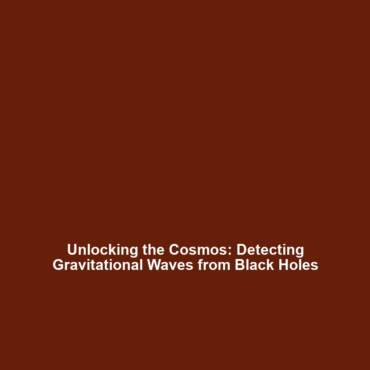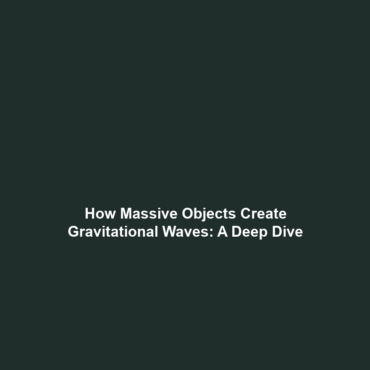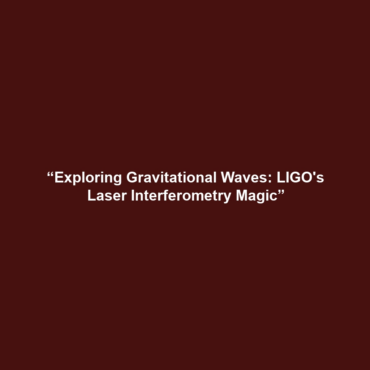The Difference Between Gravitational Waves and Electromagnetic Waves
Introduction
Understanding the difference between gravitational waves and electromagnetic waves is crucial for advancing our knowledge in physics, particularly in the study of the universe. Gravitational waves, ripples in spacetime generated by accelerating masses, fundamentally differ from electromagnetic waves, which are oscillations of electric and magnetic fields traveling through space. This distinction holds significant relevance in the broader context of Gravitational Waves, as it opens doors to new forms of astronomical observation and expands our comprehension of the cosmos.
Key Concepts
Gravitational Waves
Gravitational waves, predicted by Einstein’s General Theory of Relativity, are produced when massive objects, like black holes or neutron stars, undergo rapid acceleration. These waves pass through matter, including Earth, causing minute distortions in spacetime detectable by highly sensitive instruments like LIGO (Laser Interferometer Gravitational-Wave Observatory).
Electromagnetic Waves
In contrast, electromagnetic waves encompass a range of phenomena, including visible light, radio waves, and X-rays, defined by oscillating electric and magnetic fields. These waves can travel through a vacuum and interact with charged particles, forming the basis of numerous technologies, such as radios, televisions, and cell phones.
How They Differ
- Nature of Waves: Gravitational waves affect spacetime, while electromagnetic waves are fluctuations in electric and magnetic fields.
- Propagation: Gravitational waves travel through the universe without needing a medium, whereas electromagnetic waves can travel in a vacuum.
- Detection: Gravitational waves require specific detectors like LIGO, while electromagnetic waves can be detected with traditional instruments such as antennas and photo detectors.
Applications and Real-World Uses
The applications of gravitational waves and electromagnetic waves extend into various fields of science and technology. For instance:
- Astrophysics: Gravitational wave detection allows for the observation of cosmic events like black hole mergers.
- Communication: Electromagnetic waves facilitate wireless communication technologies, allowing for data transmission across vast distances.
- Medical Imaging: Both wave types are used in medical technologies; for example, ultrasound employs sound waves (related to electromagnetic principles) for imaging.
Current Challenges
Studying the challenges of gravitational waves and issues in electromagnetic waves can hinder advancements in both fields:
- Detection Sensitivity: Gravitational wave detectors require extreme sensitivity to measure minuscule distortions in spacetime.
- Noisy Environments: Electromagnetic wave observations can be heavily affected by interference from other signals, complicating data analysis.
- Theoretical Limitations: Current theories may not fully explain some complex interactions between gravitational and electromagnetic waves.
Future Research and Innovations
Upcoming innovations in both fields hold great potential for breakthroughs. Research into new detection methods, such as space-based gravitational wave observatories (e.g., LISA—Laser Interferometer Space Antenna), could significantly enhance our ability to observe and understand these phenomena. Additionally, advancements in quantum technology may lead to improved sensitivity in electromagnetic wave detection.
Conclusion
In summary, comprehending the difference between gravitational waves and electromagnetic waves is pivotal for the continued advancement of physics and technology. As we develop new methods for studying these waves, we not only expand our cosmic knowledge but also unlock potential applications that could redefine our understanding of the universe. For further information on this topic, consider reading about current gravitational wave research and the applications of electromagnetic waves in technology.
